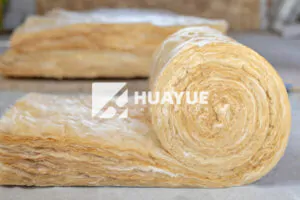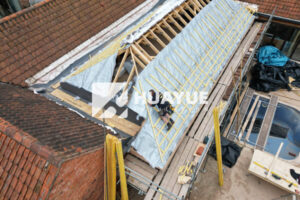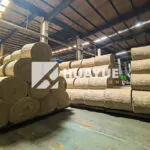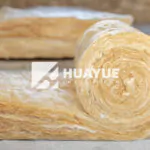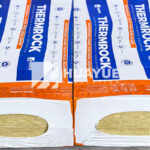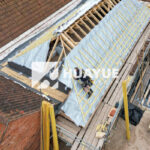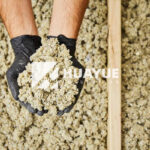What is fiberglass batt insulation?
Fiberglass batt insulation often gets overlooked, yet it quietly plays a vital role in keeping energy costs down and enhancing comfort in buildings. Many people wonder exactly what it is and if it’s right for them.
Fiberglass batt insulation consists of long, rectangular panels made of fine glass fibers. It fits between wall studs, attic rafters, or floor joists, providing thermal and sound insulation for homes and commercial buildings.

Many people get confused by the terms and options for insulation. I once needed to explain to a client why fiberglass batts were the best option for his plant’s retrofit project. Understanding its composition and benefits made all the difference. Let’s dig in to understand more.
What is Fiberglass Batt Insulation?
Fiberglass batt insulation is a common thermal barrier used in building construction to help maintain indoor temperature and reduce energy loss. Some might not know that it has been the industry standard for decades.
Fiberglass batt insulation consists of pre-cut panels made from fine glass fibers. These panels are designed for quick installation in standard building cavities. The material resists heat transfer, improving building energy efficiency.

To better understand this material, I like to compare it to a thick, flexible blanket. You cut these blankets to size and stuff them into the spaces between framing in walls, under floors, and above ceilings. When I first started working with insulation, I saw how it helps keep heat inside during winter and outside during summer. That is how fiberglass batts reduce the load on heating and cooling systems. It also adds a layer of quiet to otherwise noisy rooms. Because it comes in pre-formed panels, installation is quick and consistent, making it an ideal choice for projects on a tight timeline.
Key Features of Fiberglass Batt Insulation
| Feature | Description |
|---|---|
| Form Factor | Pre-cut panels or rolls |
| Primary Component | Fine fibers of molten glass |
| Main Use | Thermal and acoustic insulation |
| Installation Locations | Walls, ceilings, floors, attics |
| Typical R-value (per inch) | 2.9 to 3.8, depending on density and thickness |
| Common Facing Options | Kraft paper, foil, or unfaced |
| Fire Resistance | Non-combustible material |
What Is Fiberglass batt Insulation Made Of?
Some people worry about the materials in insulation. They want to know if it’s safe, durable, and effective. I get this question often from maintenance teams and homeowners.
Fiberglass batt insulation is composed primarily of molten glass spun into very fine fibers. These fibers are then bound together to form soft mats or panels. It may also contain small amounts of other materials for binding and facing.

Making fiberglass batt insulation starts with recycled glass and sand. These raw materials are melted at a high temperature in large industrial furnaces. The molten glass is then spun into very fine, hair-like strands using a fast, rotating drum or by blowing air. The fibers bond together naturally or are held in place with a safe, formaldehyde-free binder. A facing, like kraft paper or foil, can be added to one side to serve as a vapor barrier and help with installation. The final result is a flexible mat that does not itch as much as older fiberglass types and that is easy to cut to fit any space. In my experience, teams find it easy to work with and appreciate the recycled content, which supports sustainability goals.
Composition Breakdown of Fiberglass Batt Insulation
| Ingredient | Purpose |
|---|---|
| Silica Sand | Main glass-forming ingredient |
| Recycled Glass | Sustainability, cost efficiency |
| Soda Ash & Lime | Improve melting and fiber properties |
| Binders | Hold fibers together, improve handling |
| Facing (optional) | Provides vapor barrier, easier handling |
What are the main advantages of fibreglass batt insulation?
I hear variations of this question every week: “What makes fiberglass batts a compelling option?” Installers, buyers, and even engineers want to know if it’s worth their investment.
Fiberglass batt insulation offers key benefits: it is affordable, easy to install, non-combustible, and resists moisture and mold growth. It also provides good acoustic dampening and eco-friendly options with recycled glass.
Fiberglass batts can be installed by both professionals and amateurs, which keeps labor costs low. They fit easily between most standard wood or metal studs, making them a go-to choice for both new construction and retrofits. Builders appreciate their consistent thermal performance and low weight, which translates into easier transport and handling. Because fiberglass is naturally non-combustible, it helps meet fire code requirements without special additives. I particularly like the way newer fiberglass batt products use higher recycled content, helping reduce the environmental impact of projects. In chemical plants or homes, I have seen how this insulation stands up well to the test of time, maintaining its R-value and resisting damage from insects or rodents that sometimes plague other forms of insulation.
Main Advantages of Fiberglass Batt Insulation
| Advantage | Details |
|---|---|
| Cost-effective | Lower material and labor costs than many alternatives |
| Easy installation | Pre-cut sizes fit standard cavities |
| Fire safety | Will not burn or sustain flames |
| Moisture resistance | Resists mold and mildew growth |
| Sound absorption | Dampens noise transmission |
| Sustainable options | Often contains 30%-50% recycled glass |
Are there any disadvantages to fibreglass batts insulation?
No product is perfect. I have learned through years of experience that knowing the downsides is as important as knowing the advantages. Many clients appreciate honesty about tradeoffs.
Fiberglass batt insulation can leave gaps, especially if not installed carefully. Its R-value drops if it is compressed, and it can release small fibers during installation unless proper safety gear is used.
The most common issue I have seen is poor installation. Batts must be cut precisely and fitted snugly. Any space left between batt sections creates thermal bridges that let heat in or out. When squeezed into too-small spaces, fiberglass batts lose their insulating power, which can lead to cold spots or high energy bills. During handling, airborne fibers can irritate skin, eyes, or lungs, so gloves and masks are a must. In retrofit work, it can be tricky to fit batts around pipes, wires, and uncommon cavity sizes. Lastly, while fiberglass itself resists moisture, if water gets past the vapor barrier and soaks the insulation, performance drops until it dries out.
Disadvantages and Potential Workarounds
| Disadvantage | Description | Workaround |
|---|---|---|
| Installation gaps | Misfit panels can cause energy loss | Careful measuring, professional installation |
| Compressed batts | Reduced R-value in tight spaces | Avoid compression, use correct thickness |
| Fiber irritation | Fibers may be released during work | Wear gloves, masks, long sleeves |
| Moisture issues | Loses performance if water infiltrates | Ensure proper vapor barriers, fix leaks fast |
| Not suitable everywhere | Hard to install in irregular spaces | Combine with spray foam in tricky areas |
Conclusion
Fiberglass batt insulation is a cost-effective, flexible, and fire-safe thermal solution with some installation caveats. With proper handling and fitting, it supports efficient, comfortable, and safe buildings.
You may also be interested in:
Ready to Get Started?
Get in touch with our experts for personalized solutions tailored to your needs.
Get Free QuoteLatest Articles
Let's Work Together
Ready to take your business to the next level? Get in touch with our team of experts and let's discuss how we can help you achieve your goals.
Get Free Solutions
